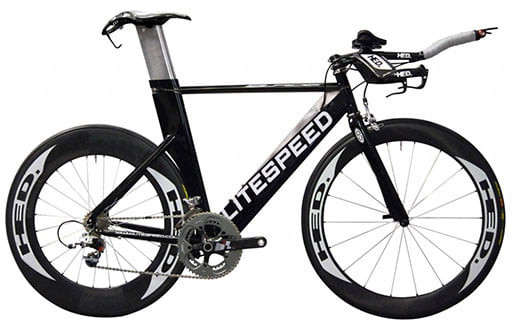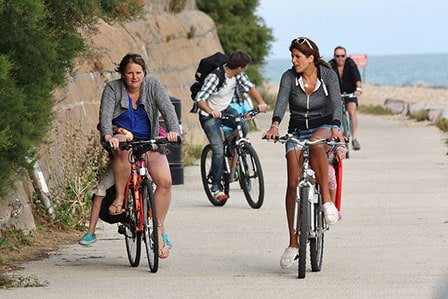We need to talk about bike insurance. It’s not the most thrilling topic, let’s be honest. Delving into insurance policies can feel like navigating a maze of jargon and fine print. But as cyclists, we understand the value – both emotional and financial – of our bikes. And in a world where bike theft is unfortunately common, and accidents can happen, exploring Good Bike Insurance options is a smart move.
 Do we need good bike insurance for cyclists?
Do we need good bike insurance for cyclists?
We know that even the strongest bike locks aren’t impenetrable, and no bike is completely theft-proof. Statistics suggest a concerning number of cyclists will experience bike theft at some point in their riding lives. This reality begs the question: is investing in good bike insurance a necessary safeguard?
When I first started researching bike insurance, I felt overwhelmed. The world of premiums, deductibles, and policy clauses seemed daunting. Like many, the idea of paying for something that might happen felt unappealing. But the potential financial loss from theft or an accident is significant, prompting a deeper dive into understanding bike insurance.
This article aims to simplify the complexities of bike insurance. We’ll break down the basics, explore different types of coverage, and help you determine if good bike insurance is the right choice for you. Let’s get through this essential topic so we can get back to what we truly love: riding our bikes with peace of mind.
Understanding the Basics of Bike Insurance
Let’s start with the fundamentals. If you’re new to insurance concepts, or just need a refresher, this section is for you. Think of this as Bike Insurance 101.
Essentially, insurance is a contract where you, the insured, pay a regular fee (the premium) to an insurance company. In return, the company promises to cover specific financial losses if certain unfortunate events occur. This agreement is detailed in your insurance policy, outlining exactly what’s covered, what’s excluded, and the conditions for claim payouts.
Insurance Premium: The recurring cost you pay for your insurance coverage.
What Can Good Bike Insurance Protect Against?
For cyclists, “financial loss” primarily stems from three key areas: theft, damage, and accident-related medical expenses. Good bike insurance is designed to mitigate these risks. By paying your premiums, you gain a safety net. If your bike is stolen or damaged, or if you incur medical bills from a cycling accident, your insurance policy can cover part or all of those costs, depending on your coverage.
 Imagine replacing your bike with good bike insurance.
Imagine replacing your bike with good bike insurance.
Sounds straightforward, right? While the core concept is simple, the specifics are in the policy details. Insurance policies are legal documents, and they meticulously outline the circumstances under which the company will and will not provide coverage. These conditions are in place for good reason, ensuring fair practices for both the insurer and the insured.
To make an informed decision about good bike insurance, understanding these conditions is crucial. But before diving into policy specifics, let’s explore the four main avenues for insuring your bicycle, starting with the least expensive and progressing to more comprehensive options.
1. Self-Insurance: The Default Choice (and its Risks)
The most basic approach is self-insurance, which is essentially choosing not to have bike insurance at all. In this scenario, you are responsible for covering all costs related to theft, damage, or injury yourself. The immediate “pro” is that it’s free – until something goes wrong. However, for those riding valuable bikes, self-insurance can be a risky gamble. Replacing a high-end bike out-of-pocket can be a significant financial burden.
 Self-insurance: risky for expensive bikes.
Self-insurance: risky for expensive bikes.
One variation of self-insurance is to proactively save the equivalent of insurance premiums in a dedicated savings account. This creates a “bike replacement fund.” If you remain incident-free, you accumulate savings. But if the unexpected happens early on, your fund might not be sufficient to cover the loss.
Self-Insurance: Pros and Cons
Pros
- No upfront cost unless you choose to save proactively.
Cons
- Potentially high financial burden if theft or damage occurs.
- No coverage for accident-related medical expenses or liability.
- Lack of peace of mind, especially for owners of expensive bikes.
2. Bike Lock Anti-theft Protection: A Limited, Budget Option
Some bike lock manufacturers, notably Kryptonite and OnGuard, offer anti-theft protection programs as a supplementary guarantee for their locks. For a small fee (ranging from a few dollars to around $30 for several years of coverage), these programs promise compensation if your bike is stolen while properly secured with their lock.
However, relying solely on anti-theft protection as your “good bike insurance” has limitations. Claim processes can be complex. For example, you’re often required to provide the broken lock as evidence, which may be impossible if thieves dispose of it. Eligibility restrictions may apply in high-theft areas, and various policy conditions can make claims challenging. For a detailed analysis, you can explore reviews of anti-theft protection programs.
Anti-theft Protection: Pros and Cons
Pros
- Relatively inexpensive add-on to a bike lock purchase.
- Offers some level of financial protection against theft.
Cons
- Claim processes can be difficult and restrictive.
- Often requires the broken lock as proof of theft.
- Limited coverage with specific terms and conditions.
- Does not cover damage, injury, or liability.
- Not available in all areas or for all locks.
3. Leveraging Existing Policies: Homeowners, Renters, and Vehicle Insurance
Many cyclists may already have some level of bike theft coverage through their existing homeowners insurance, renters insurance, or even vehicle insurance policies. Since a significant percentage of bike thefts occur from the owner’s residence, these policies might offer some protection.
 Homeowners insurance might offer some bike coverage.
Homeowners insurance might offer some bike coverage.
It’s crucial to carefully review your policy’s fine print. While some policies may cover personal property theft regardless of location, coverage is often limited to incidents at your home or in a vehicle associated with your property. Street theft and crash damage are typically not covered.
Furthermore, homeowners/renters policies often have coverage limits and deductibles. A deductible is the amount you must pay out-of-pocket before insurance coverage kicks in.
Deductible: The amount you pay out-of-pocket before your insurance starts covering costs.
For instance, if your bike is worth $700 and your deductible is $300, you’d only receive $400 if your claim is approved. Filing a claim might also impact your no-claims discount, a reduction in premiums for claim-free years. The long-term cost of losing this discount could outweigh the bike’s replacement value.
No-claims discount: A premium reduction for each year you don’t file a claim.
However, there’s a potential workaround. You may be able to schedule your bike as a “valuable personal property item” on your homeowners policy. This often increases coverage limits and may waive the deductible. Contact your insurer to explore this option and understand the specific terms.
Homeowners/renters insurance might also include personal liability coverage, which can protect you if you accidentally damage someone else’s property or cause bodily harm.
Personal Liability Cover: Insurance that covers costs if you accidentally damage someone else’s property or injure them.
For example, if you accidentally scratch a car while cycling, liability coverage could help cover the repair costs.
 Bike accident with a car and potential liability.
Bike accident with a car and potential liability.
Policy details vary significantly. Thoroughly review your existing policies, inquire about scheduling your bike, and understand the specifics of bicycle theft and liability coverage.
Homeowners/Renters/Vehicle Insurance: Pros and Cons
Pros
- May already be in place, no additional premium in some cases.
- Could offer basic theft coverage from home or associated vehicle.
- May include some level of personal liability coverage.
Cons
- Limited theft coverage, often restricted to home/vehicle.
- Typically doesn’t cover theft in public places or crash damage.
- High deductibles can reduce claim payouts.
- Claiming may affect no-claims discounts.
- Personal liability coverage might be limited compared to specialist policies.
4. Specialist Bike Insurance: Comprehensive Coverage for Cyclists
For the most comprehensive protection against theft, damage, injury, and liability, specialist bike insurance is the leading option. Designed specifically for cyclists, these policies offer tailored coverage to address the unique risks associated with cycling.
What Does Good Specialist Bike Insurance Typically Cover?
-
Bicycle and Accessories: Covers the full value of your bike and cycling accessories in case of theft or accidental damage. Specialist insurers often have expertise in handling cycling-related claims, potentially streamlining the process. This coverage usually extends to theft from any location, including public places.
-
Personal Injury and Loss of Income: Offers more extensive medical coverage than general health insurance, often including work-loss coverage to compensate for lost wages due to cycling-related injuries.
-
Personal Liability: Provides robust liability coverage, protecting you from financial responsibility if you cause injury or property damage to others while cycling.
 Specialist bike insurance covers theft from the street.
Specialist bike insurance covers theft from the street.
Important Considerations for Specialist Policies:
-
Negligence: Policies generally won’t cover theft resulting from gross negligence, such as leaving your bike unlocked in an unsecured location or inviting theft through carelessness.
-
Approved Locks: Specialist insurers usually require the use of “approved” bike locks (often listed in the policy documents) and proper locking techniques (securing the bike to an immovable object). Failure to meet these requirements could invalidate a theft claim.
 Badly locked bike may not be covered by insurance.
Badly locked bike may not be covered by insurance.
Understanding Third-Party Liability:
Liability coverage often involves “third parties,” which can be confusing. Here’s a breakdown:
- First Party: You, the insured cyclist.
- Second Party: The insurance company.
- Third Party: Anyone else involved in an incident – pedestrians, other cyclists, motorists, property owners, etc.
In a scenario where you collide with a pedestrian, causing injury and damaging a shop window, the pedestrian and the shop owner are considered third parties. Specialist bike insurance liability coverage protects you from potential legal claims and financial responsibility arising from such incidents.
Is Specialist Bike Insurance Right for You?
Specialist bike insurance is particularly valuable in two key situations:
-
Frequent Racers: Cyclists who race regularly face a higher risk profile due to increased exposure to crashes and potential bike damage or personal injury during competitions.
-
Expensive Bikes: If you own a high-value bike that is essential for transportation, training, or recreation, and you couldn’t easily afford to replace it, specialist insurance provides crucial financial security.
 Specialist insurance is a good choice for bike racers.
Specialist insurance is a good choice for bike racers.
Even if you don’t fit into these categories, specialist bike insurance deserves consideration. Accidents can have significant financial and personal consequences. As highlighted by the story of Nako Nakatsuka, a cyclist severely injured by a negligent driver, the costs associated with serious accidents – medical bills, lost income, property damage – can be substantial.
In collisions involving cyclists and motorists, cyclists are often unfairly blamed, regardless of fault. Good specialist bike insurance can provide crucial support and financial protection in such situations.
Specialist Bike Insurance: Pros and Cons
Pros
- Most comprehensive coverage, including theft, damage, injury, and liability.
- Covers theft from any location.
- Often includes personal injury and loss of income coverage.
- Robust personal liability protection.
- Expertise in handling cycling-related claims.
Cons
- Generally the most expensive bike insurance option.
- May have requirements for approved locks and locking techniques.
Homeowners Insurance vs. Specialist Bike Insurance: Key Differences
Choosing between homeowners/renters insurance and specialist bike insurance requires understanding their core distinctions:
-
Theft Coverage: Homeowners insurance typically covers theft from your property (home, garage, car). Specialist bike insurance covers theft from anywhere, including public locations.
-
Liability Coverage: Homeowners policies may offer some personal liability, but specialist bike insurance provides more extensive liability coverage tailored to cycling-specific risks.
-
Scope of Coverage: Homeowners insurance is broad, covering various aspects of your home and belongings. Specialist bike insurance is specifically focused on cycling and related risks, offering more targeted and comprehensive protection for cyclists.
Recommended Specialist Bike Insurance Providers
Two prominent providers in the specialist bike insurance market are Markel and Velosurance. Both offer comprehensive coverage for theft, damage, personal injury, and third-party liability, with customizable policies to suit individual needs. They are generally recognized for good customer service and fair claims handling.
Markel Insurance: Ideal for Racers
Markel is often favored by competitive cyclists. In addition to standard coverage, Markel policies may include benefits like replacement of damaged cycling kit during races and reimbursement for race entry fees if you can’t compete due to theft or damage. However, consider deductibles; the value of kit replacement or entry fee reimbursement might be less than your deductible amount.
Velosurance: A Solid All-Around Choice
Velosurance, a subsidiary of Markel, is well-regarded among cyclists for balanced coverage at competitive prices and a reputation for honoring claims.
Exploring Alternative Approaches
Beyond traditional insurance policies, consider innovative alternatives like social insurance. Cycle Syndicate in the UK is an example of “Bike Protection fuelled by friendship.” This model involves a group of cyclists pooling resources to support each other in case of theft, eliminating insurance company profits and potentially lowering costs. While not yet widespread in the US, this peer-to-peer approach offers an intriguing alternative.
Conclusion: Choosing the Right Bike Insurance for You
Navigating bike insurance options can feel complex, but understanding the choices empowers you to make informed decisions. The “best” bike insurance is highly personal and depends on your individual circumstances, risk tolerance, and the value you place on your cycling activities and equipment.
If you are a dedicated cyclist – whether a racer, a daily commuter on an expensive bike, or someone who relies on their bike significantly – specialist bike insurance is a strong recommendation. It offers the most comprehensive protection against a wide range of cycling-related risks, providing peace of mind knowing you’re covered wherever you ride.
 Recreational cyclists may need less insurance.
Recreational cyclists may need less insurance.
For more casual or recreational cyclists, self-insurance or relying on homeowners/renters insurance might seem sufficient. Many cyclists default to self-insurance, hoping for the best and potentially relying on limited homeowners coverage. While this can be adequate for some, it’s crucial to understand the potential financial risks involved.
Ultimately, good bike insurance is about finding the right balance between cost, coverage, and peace of mind. Weigh your options, assess your needs, and choose the path that best protects you and your passion for cycling. And remember, pairing good bike insurance with the best bike lock further enhances your protection against theft.
More Resources:
- Sold Secure Gold Locks: The List
- Win a Free Bike! Competition
- How to Choose and Fit a Ground Anchor

